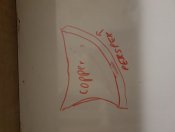Benslights
Dedicated elf
If you want to look at some interaction you can use a midi keyboard and you can create a short sequence to each key.
check this video out for more detail.
View: https://www.youtube.com/watch?v=0ab3ybcKOgw
check this video out for more detail.
View: https://www.youtube.com/watch?v=0ab3ybcKOgw






